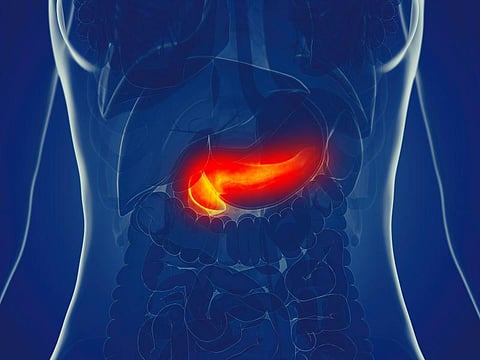MONDAY, April 25, 2022 (HealthDay News) -- For patients with necrotizing pancreatitis, the rate of fistula formation and mortality is lower with endoscopic drainage (ED) than with other surgical drainage methods, according to a systematic review and meta-analysis published online April 14 in Endoscopy International Open.
Mehdi Mohamadnejad, M.D., from the Tehran University of Medical Sciences in Iran, and colleagues conducted a systematic review to examine the outcomes of ED and different types of surgical drainage approaches in necrotizing pancreatitis. The final analysis included data from 170 studies with 11,807 patients.
The researchers found that the pooled mortality rates were 22, 8, 13, and 3 percent with open surgery (OS), minimally invasive surgery (MIS), a step-up approach, and ED, respectively. The corresponding pooled rates of fistula formation were 35, 17, 17, and 2 percent. Seventeen comparative studies were identified that compared different drainage methods to ED. Compared with OS and MIS, the mortality rate was significantly lower with ED (risk ratios, 0.30 and 0.40, respectively). The rate of fistula formation was also lower with ED than other drainage approaches.
"This comprehensive systematic review showed that ED has a lower rate of fistula formation and of mortality compared to various surgical drainage approaches for necrotizing pancreatitis," the authors write. "It should be noted that necrotizing pancreatitis is a heterogeneous disease and 'one size' treatment does not fit all, and the management of such patients should be discussed in multidisciplinary meetings."
One author disclosed financial ties to the pharmaceutical and medical device industries.
Abstract/Full Text


